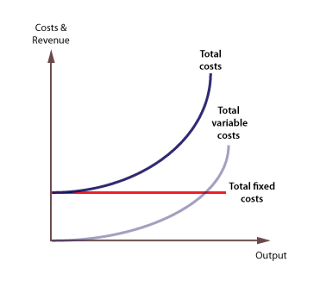Discussing the Components of an Ecosystem |Essay Tips|Assignment Help
Ecosystems are complex and interconnected networks of organisms and their physical environment, depending on each other to support life and maintain the balance in the natural world. From the dense rainforests to the endless oceans and of course our own yards, ecosystems are diverse and they do take a lot of forms, each with a different collection of components. In this blog post, we set out to discover how different elements of ecosystem function and interrelate to achieve ecological balance.
What is an Ecosystem?
Before considering the constituents of an ecosystem, let us first define what an ecosystem is. On a simpler level, an ecosystem can be described as an assembly of living organisms (biotic components) along with their non-living environment (abiotic components). The intertwined interactions create a network of relationships through which the circulations of energy and nutrients take place within the ecosystem.
Biotic Components:
Producers: Furthermore, producers or autotrophs are organisms which can produce their own food using processes such as photosynthesis (in plants) or chemosynthesis (in certain bacteria). They build the base of the food chain by converting sunlight or chemical energy into organic matter.
Consumers: The consumers are organisms which by feeding off other organisms get their energy. These categories are primary consumers (herbivores), secondary consumers (carnivores on herbivores), and tertiary consumers (carnivores on carnivores).
Decomposers: The destructive role of decomposers is to break down dead organic material and to recycle nutrients back into the ecosystem. These are microorganisms such as bacteria, fungi, and invertebrates which eat decomposing plant and animal matter.
Abiotic Components:
Climate: Climate means long-term averages of factors such as temperature, precipitation, humidity, wind and other atmospheric conditions. It impacts on the distribution of plants and animals within an ecosystem and it is one of the main drivers shaping its structure and functioning.
Soil: Soil is the foundation of the terrestrial ecosystem that provides indispensable nutrients, water and support for plant growth. Its makeup and characteristics such as soil type (texture, pH, and organic matter), influence what plants will prosper in a specific environment.
Water: Water is a key abiotic factor of all ecosystems as it is a medium for chemical reactions, it provides a home for aquatic creatures and it acts as a source of water for plants and animals. Water availability can greatly affect the diversity and productivity of a natural landscape.
Geology: Geological factors like topography, substrate composition and geological processes (including erosion and sedimentation) play a pivotal role in determining the physical structure of ecosystem and it affects biodiversity and ecological dynamics in the region.
Interactions and Dynamics:
On top of the mentioned elements, ecosystems are typically a complex system full of interactions and dynamics that influence their performance and stability.These include:
Food Chains and Webs: The energy and nutrients movement through the ecosystem is achieved by complex networks of feeding relationships called food chains and food webs. By showing the energy flow from producers to consumers and decomposers these networks demonstrate close relationships among the organisms in the ecosystem.
Biogeochemical Cycles: Nutrients including carbon, nitrogen, and phosphorus are circulated through the ecosystem in the course of biogeochemical cycles. This continuous process involves the uptake, transformation and emission of nutrients by the living organism and the inorganic environment through the recycling of important elements.
Succession: In ecological succession, the ecosystem undergoes the structural and compositional change through gradual natural process. It could include the colonization of virgin habitats by initial species, the formation of different communities, followed by the climax stage that is established between stable and mature vegetation.
Disturbances: Environmental and human-made disturbances, including wildfires, hurricanes, and deforestation by man and pollution can have a big effect on ecosystem structure and function. On the one hand, certain upsets could unbalance ecosystems, while on the other hand, others through processes like regeneration and adaptation could promote renewal and diversity.
Conclusion:
Finally, ecosystems can be described as complex and dynamic systems where numerous biotic and abiotic elements interrelate in a web-like way. Through comprehending the intricate facets and processes that make up an ecosystem, we can derive the underlying rules that make life on earth work. It's also a reflection of nature's resilience and interconnection through the range of ecosystems, be it lush forests or barren deserts, thus we need to conserve and protect our planet's biodiversity for the future generations to come.
Watch out for the continuation of the series on the mysteries of ecology and the splendor of nature. Until next time, continue to wander, continue to learn, and continue to wonder at the diversity and complexity of our world's ecosystems!
WATCH MORE




Comments
Post a Comment